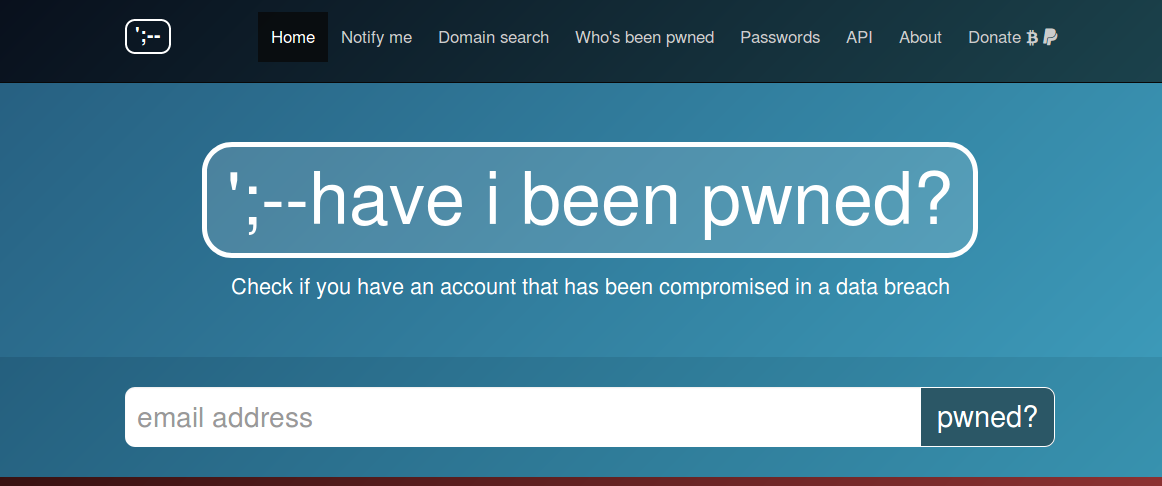Free Test for email breach
Change your password immediately if your account has been breached.
Quickly assess if they may have been put at risk due to an online account of theirs having been compromised or "pwned" in a data breach. To keep it dead simple to use and entirely free so that it could be of maximum benefit to the community.
Go on test your email Here
Get to grips with the essential service for checking if you've suffered a data breach...
- The most popular site for checking if your email address, and other accounts tied to it, has been hacked is Have I Been Pwned.
- Here you can safely enter your email address and the site will check it against multiple data breach incidents.
- If your account details were included in one of those breaches, the site will tell you with the message "oh no – pwned" flashing up on screen.
- It will also give you information on the breach and the type of data that was compromised, such as email addresses and passwords, and which service it was linked to.
- The site only asks for your email address, so you don't need to worry about handing over passwords and other sensitive info.
- Just enter your email into the search bar, and click the "pwned?" button next to it.
- The results will then appear on the corresponding page.
- If you're met with bad news, your first move should be to change your login password for the affected account.
- You should also do the same for the service that was hit by the breach.
